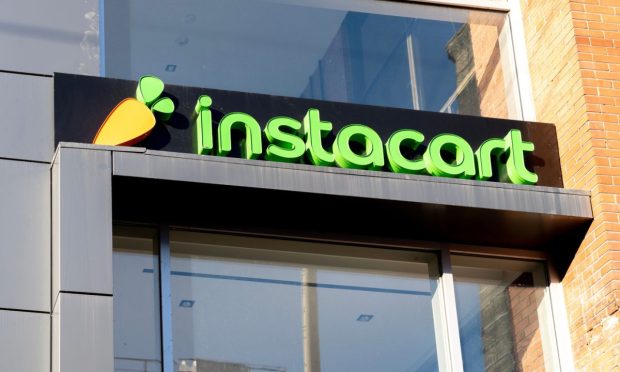
Instacart has significantly expanded its acceptance of Supplemental Nutrition Assistance Program (SNAP) Electronic Benefits Transfer (EBT) payments, as aggregators compete to unlock the spending opportunities presented by a range of benefits programs.
The grocery aggregator announced Tuesday (Jan. 30) that it has broadened its SNAP acceptance to reach 96% of households enrolled in the program, enabling these payments across a range of grocers, including select Kroger-owned banners, Hy-Vee, Schnucks and others.
“By expanding with retailers, we’re giving SNAP families greater dignity of choice, and helping many experience — for the first time — the convenience of having groceries from these retailers delivered to their doorstep,” Sarah Mastrorocco, vice president and general manager of Instacart Health, said in a statement.
The move comes as aggregators compete to both win the spending of SNAP recipients and drive overall eGrocery penetration with lower-income consumers. In September, for instance, Uber announced plans for Uber Eats to accept SNAP EBT payments this year. Plus, last summer, DoorDash shared that it was adding the option for consumers to make purchases with these benefits.
Historically, there has been a gap in eGrocery adoption between high earners and low-income consumers. PYMNTS Intelligence’s 2022 study, the “ConnectedEconomy™ Monthly Report: The Gender Divide Edition,” which drew from a survey of more than 2,600 U.S. consumers, revealed that 58% of men and 43% of women with annual incomes exceeding $100,000 reported that they had order groceries online for home delivery, while only 28% of men and 26% of women whose incomes were lower than $50,000 said the same.
Yet the market opportunity is there. In a 2022 interview with PYMNTS’ Karen Webster, Ofek Lavian, CEO and co-founder of third-party payment processor Forage, noted that many SNAP EBT participants live in areas where the nearest stores do not offer healthy foods. As such, grocery delivery may be one of the only ways to get the ingredients they need. Plus, these consumers are disproportionately likely to have disabilities, making delivery options key to accessibility.
SNAP EBT payments are not the only benefits aggregators are competing to capture. In November, DoorDash added the ability for consumers to use their health savings accounts (HSAs) and flexible spending accounts (FSAs) to pay for eligible items at select merchants.
Plus, in the same September Uber Eats announcement, the aggregator shared that it is working to make it possible for consumers to buy eligible items with their FSA cards and Flex Cards, among other healthcare benefit payments.
Instacart, for its part, has been targeting the opportunity that FSA and HSA benefits present since late 2022.
Indeed, consumers are looking for new ways to afford their grocery purchases. PYMNTS’ study “Tracking the Digital Payments Takeover: What BNPL Needs to Win Wider Adoption,” created in collaboration with Amazon Web Services, revealed that of the 20% of consumers who used BNPL, 56% leveraged the payment method to buy groceries.
Instacart’s recent expansion of SNAP acceptance reflects a growing trend among aggregators competing to tap into the substantial spending potential of benefit programs. As the landscape evolves, these initiatives not only enable platforms to reach more consumers but also point to the growing role of digital platforms in shaping the future of how consumers across demographics shop for groceries.